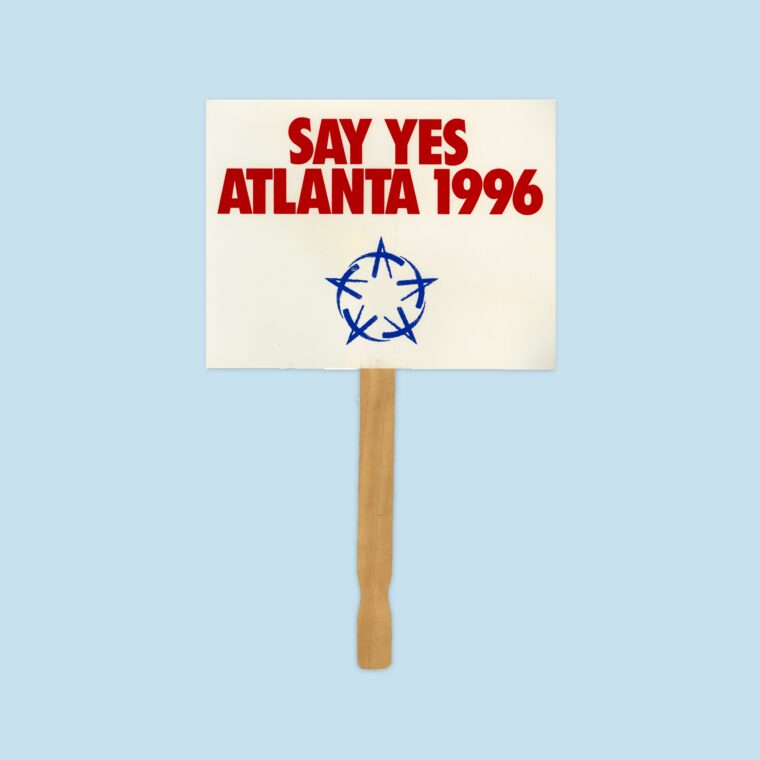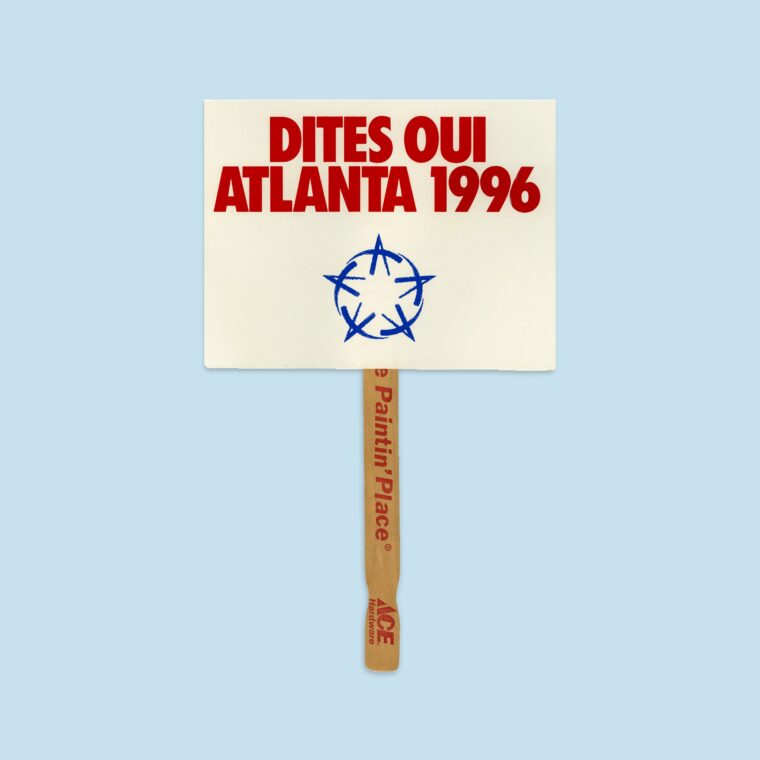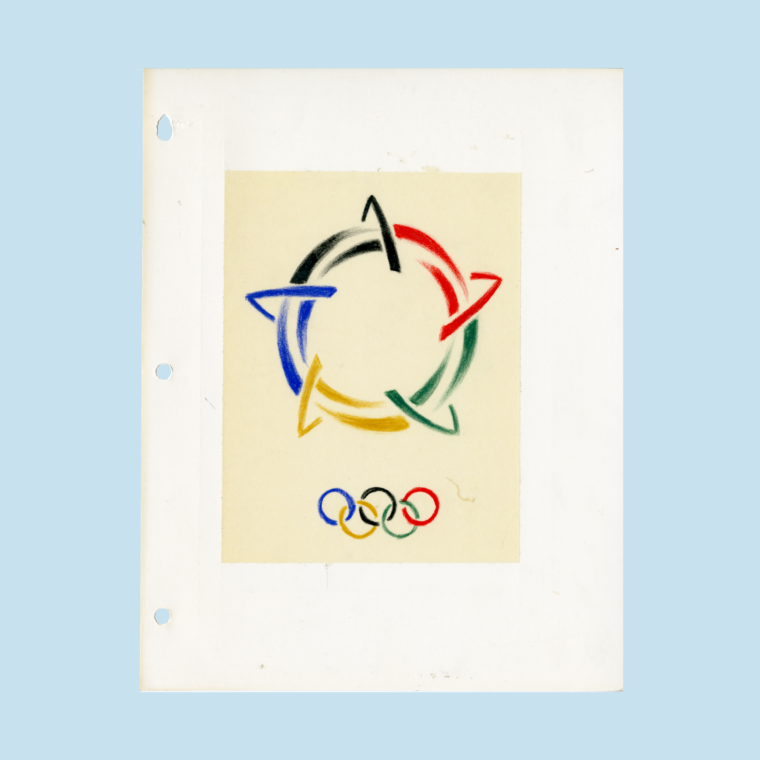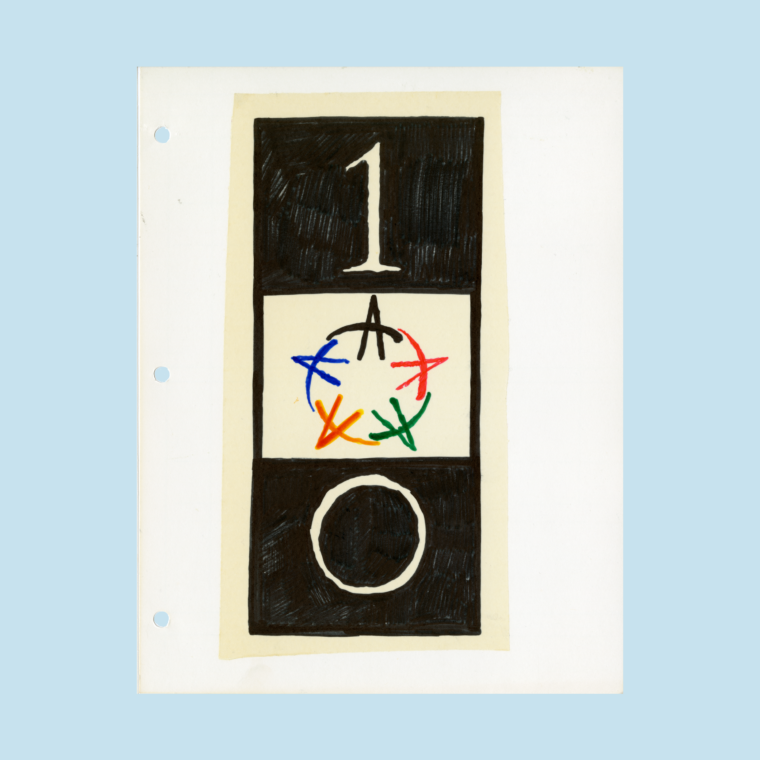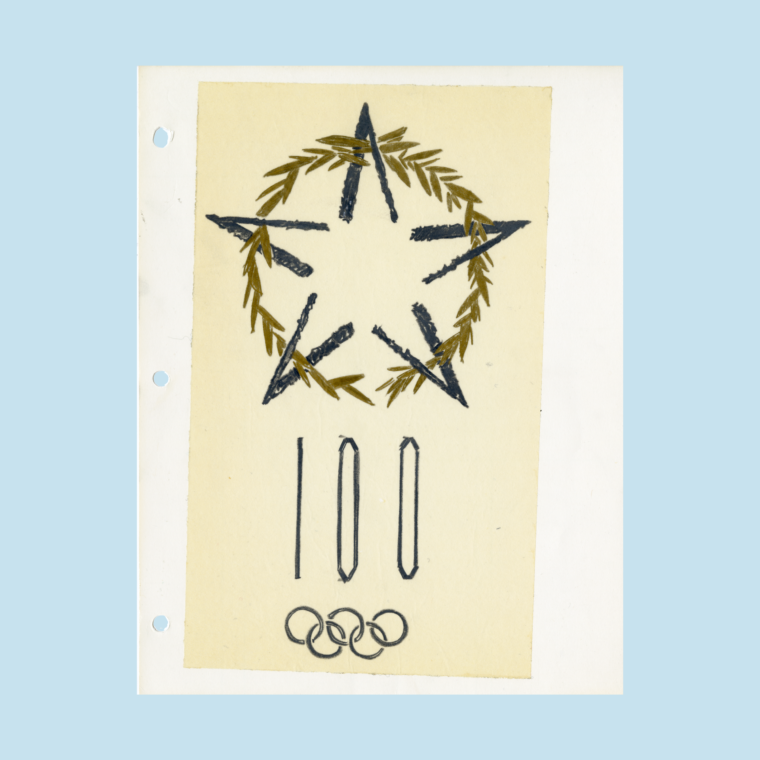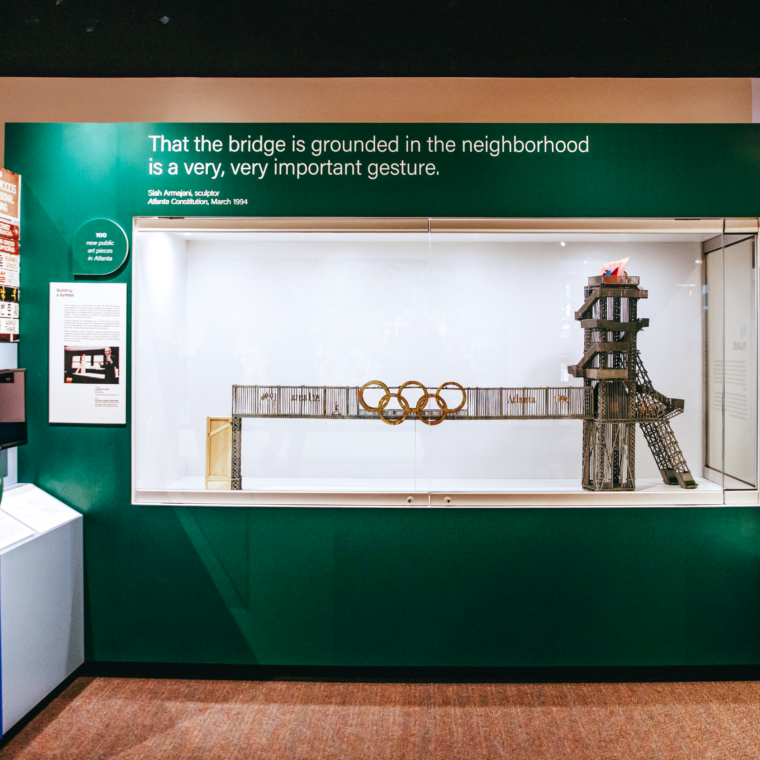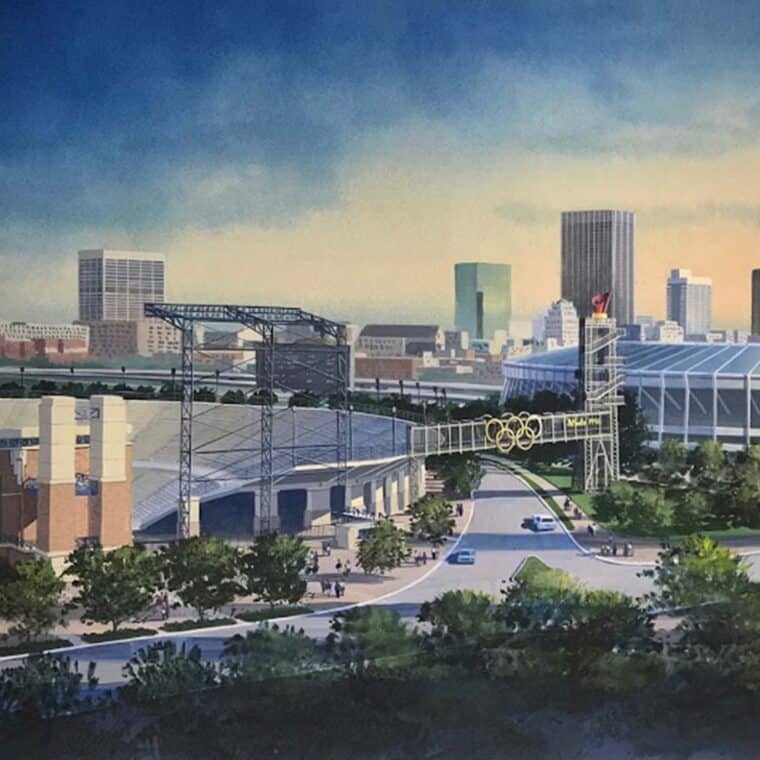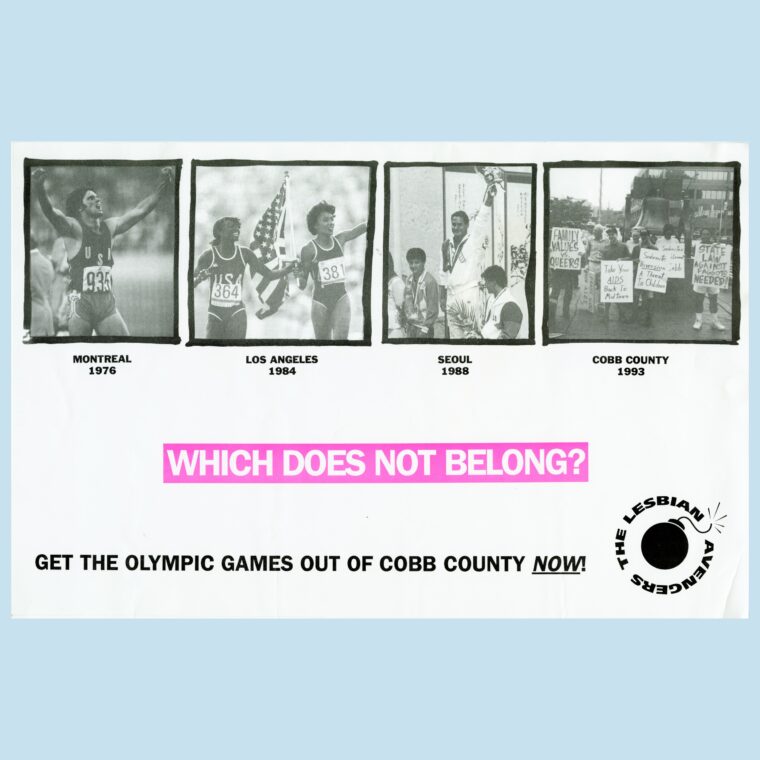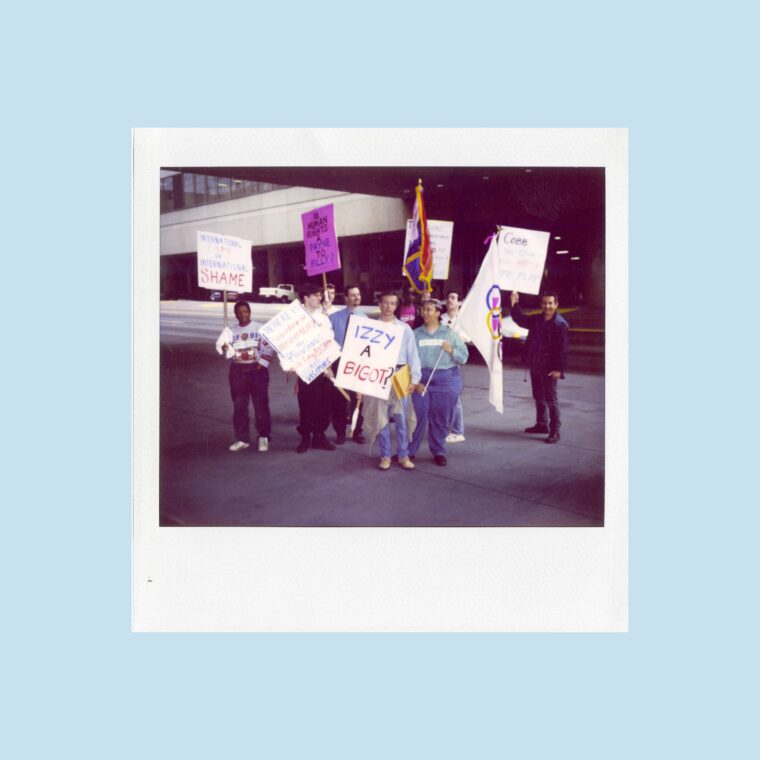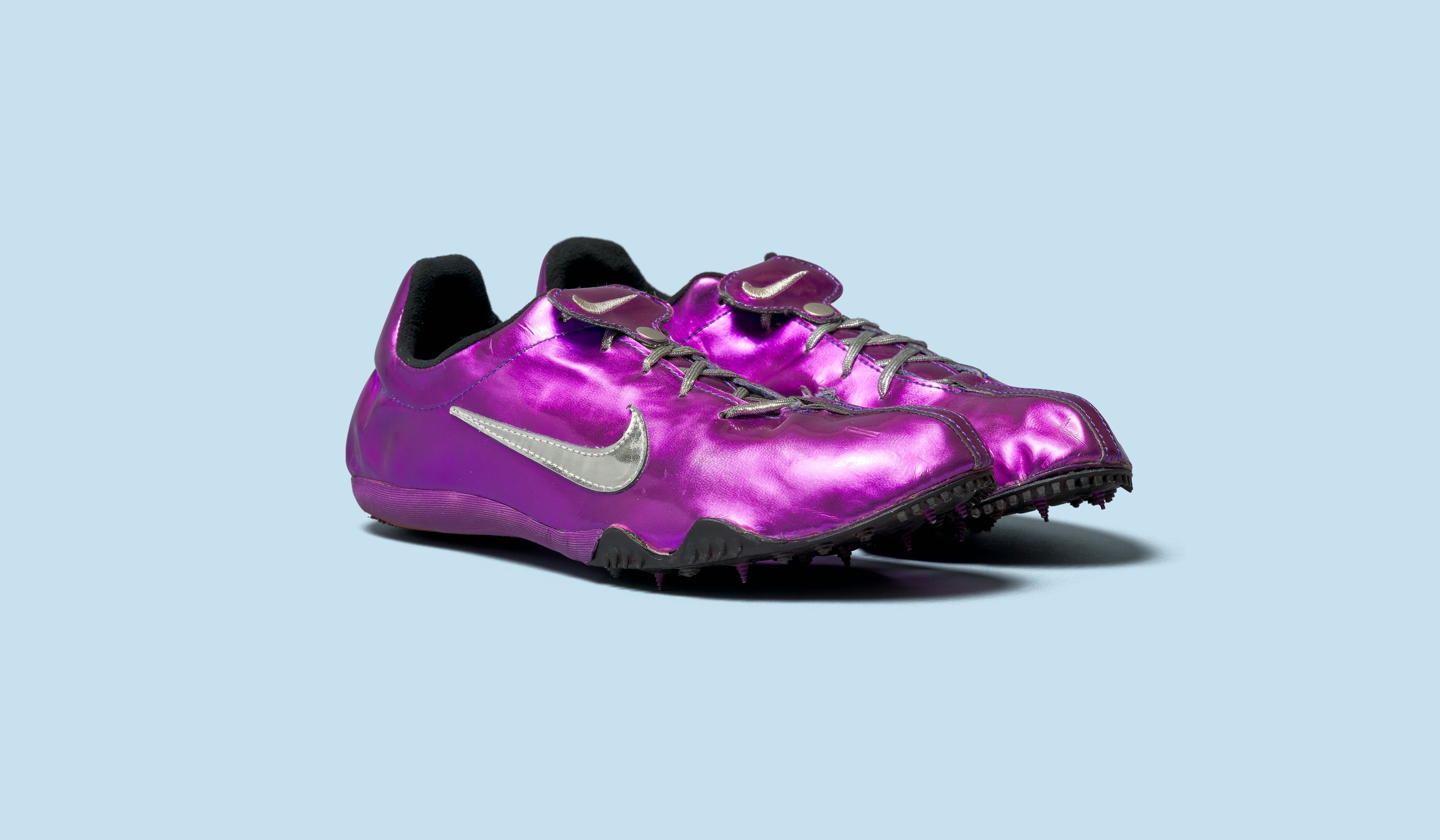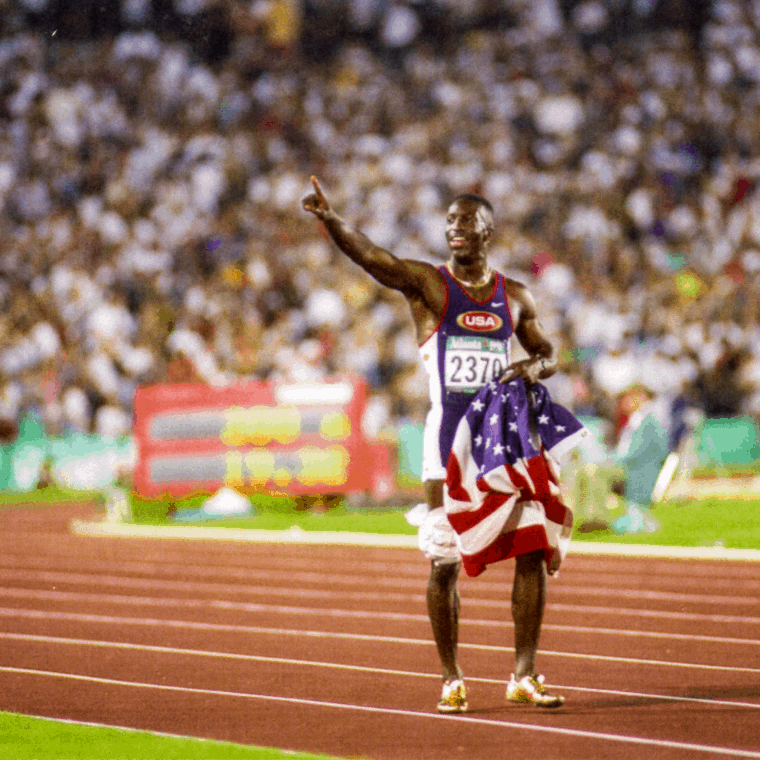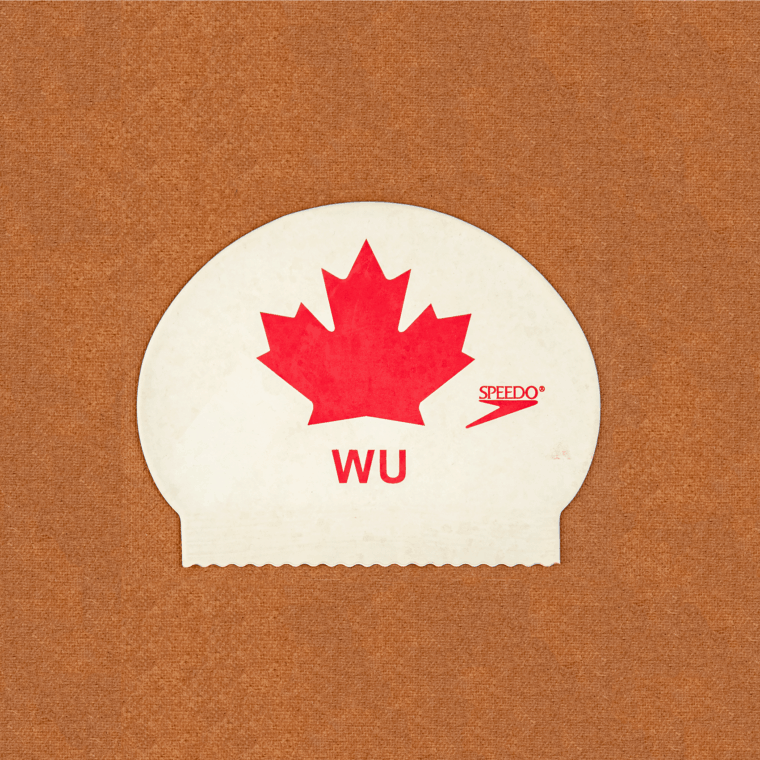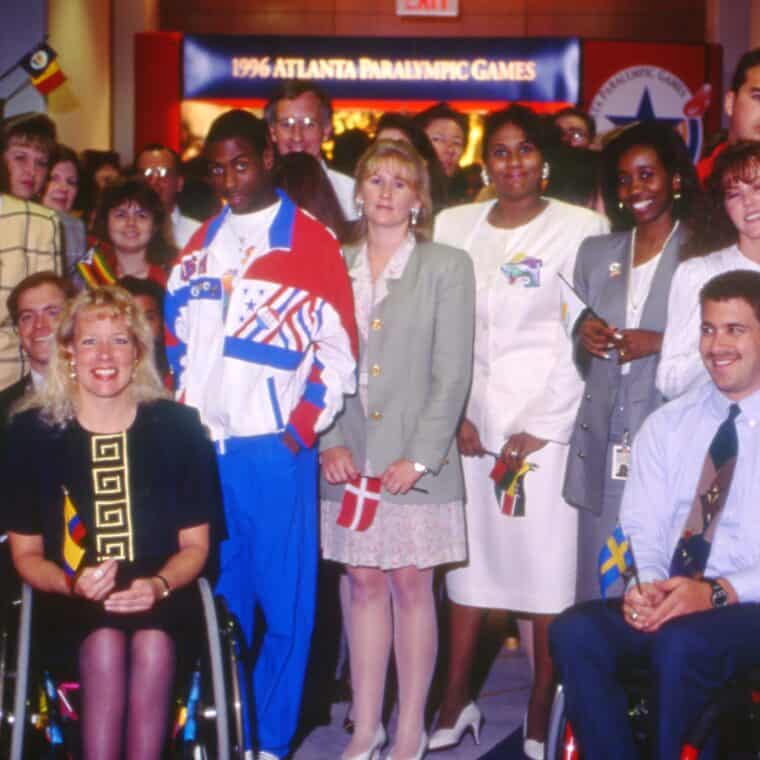Atlanta’s Olympic and Paralympic history provides a window into many different kinds of stories.
Beyond just the events of the Games, this history includes stories of people, economies, cultures, tensions, and ideas. The stories from Atlanta’s Games tell us about urban history, business, design, activism, and sports. They connect local, national, and global narratives, and highlight changes and events large and small. This recent history is full of learning opportunities and research topics.
Bid Processes
Documents and objects from the bid illuminate the steps of this process for an interested city. These collections record how the city formed a coalition around the idea and the international requirements of the time. The bid process encompasses political and economic histories and highlights the ways mega-events have been pitched to both the public and the deciding bodies.
Learn more on our blog: How Atlanta Became A Host City
These signs, made by organizers of Atlanta’s Olympic bid, were present at events and celebrations in Atlanta and Tokyo during the bid process for the 1996 Olympic Games. Printed and attached to paint stirring sticks, the signs announced a cheer for Atlanta in both English and French, the two official languages used for Olympic events. Flip to see the reverse.
Design History
Atlanta History Center’s collections of sketches, presentation materials, prototypes, and completed design pieces demonstrate the considerations and new challenges that design work was used to solve.
Learn more on our blog: Designing ’96
Copeland Design (later Copeland Hirthler Design) worked on many projects for the bid process and Olympic Games, including logo development. The firm worked through a variety of possibilities for the official Games logo, including variations on their popular bid design. Seeking a new look for the Games, Olympic organizers brought other design firms into the process to create the final logo.
Design provides insights into the era in which it was created. The designs of the Olympic and Paralympic Games were developed to communicate specific messages and grew out of historical influences.
Urban Change
A city’s history is layered with the results and impacts of big projects. Preparations for the large-scale events of the Games added new venues and urban renewal initiatives across Atlanta’s metro area. These stories highlight how urban planning and changes affect a city and its residents, who is involved in decision making, who benefits, and who bears the brunt of changes.
Learn more on our blog: Venues and Impact: Planning the Sites of ’96
One of the firms involved in designing Centennial Olympic Stadium shared this aerial photograph with Atlanta’s Olympic organizers, proposing a possible location for the stadium. The overlay on the image shows the approximate scale of a large stadium without parking lots.
Proposed Four-block Stadium Site
Georgia Aerial Surveys, photographer
Atlanta: Heery Architects & Engineers, July 29, 1991
Georgia Amateur Athletic Foundation Collection
Art & Culture
Plans for the Games also included events and initiatives that had long-term impact on the city’s arts and cultural scene. From new public art to exhibitions, performances, and festivals, the event engaged artists, arts administrators, and institutions in the Atlanta area.
Learn more on our blog: Not Just Sports: Arts & Culture of the ’96 Games
Siah Armajani was an Iranian-American artist and the first sculptor commissioned to create an Olympic cauldron. He designed Atlanta’s cauldron as a tower with a bridge to link it to Olympic Stadium. This was intended as a symbol of unity between Olympic athletes and the local community. Time constraints of broadcast television and the inaccessibility of the stairs required changes to be made from his initial vision for how the cauldron would be lit.
Social Activism
Individuals make their voices heard through activism. Movements for change converged with preparations for the Games, and individuals generated coalitions to press for poverty, disability, and LGBTQIA+ rights.
Learn more on our blog: Direct Action: Voices of Dissent and Social Activism in Atlanta’s Olympic History
The Lesbian Avengers, a women’s liberation movement organization founded in 1992, produced posters to support the Olympics Out of Cobb effort. Olympics Out of Cobb movement formed from activists involved in pushing for Cobb County to rescind a recent anti-gay resolution. The poster contrasts celebratory scenes from past Olympic Games with the scene of anti-gay demonstrators in Cobb County holding signs with hateful messages.
Sports History
The events of the Games include stories of wins, losses, and personal achievements as well as moments with broader influence. International political tensions and fights for gender or racial equality often play in out arenas. Sports history allows us to look at the role of the athlete in different ways and see how there is often much more at stake than the medal.
Michael Johnson famously raced to record-setting victories in the 200- and 400-meter events in 1996. He was the first male athlete to win both events at the same Olympic Games—a feat matched by French sprinter Marie-José Pérec for the women in 1996. His shoes were a memorable accessory. He wore these purple shoes during the trials.
Disability History
The story of the Paralympic Games speaks to longer story of disability history and a push for parity for disability sports. In the early 1990s, bids for the Olympic and Paralympic Games were still separate. Activists, athletes, philanthropists, and healthcare administrators came together in Atlanta to advance the Paralympic and disability rights movements.
Walter Wu is a champion level Canadian swimmer and career Paralympian. The ’96 Games marked his first Paralympic appearance. Wu won gold medals in freestyle, backstroke, butterfly, and medley events in Atlanta, competing alongside athletes with disabilities in the vision impairment categories.

